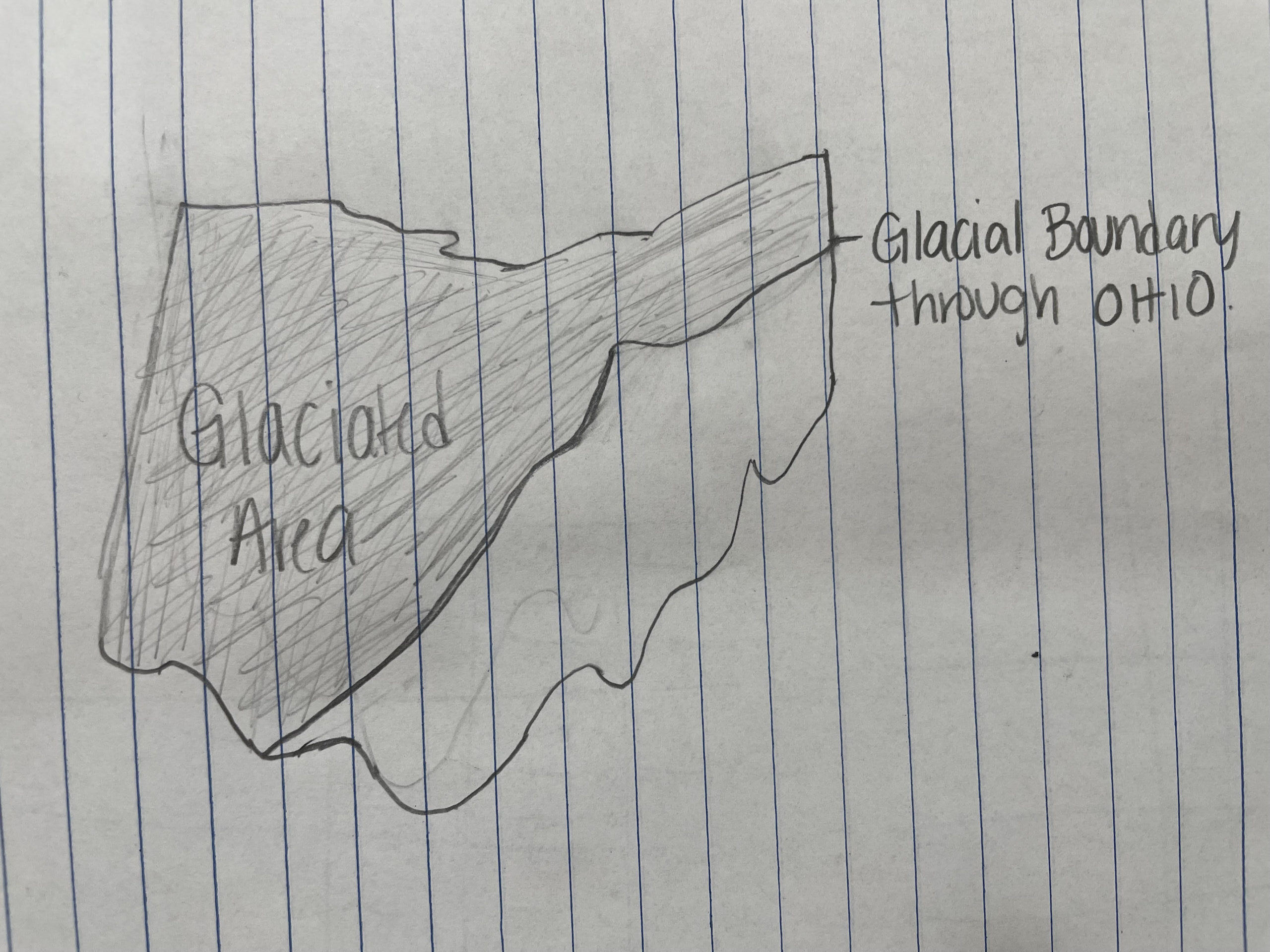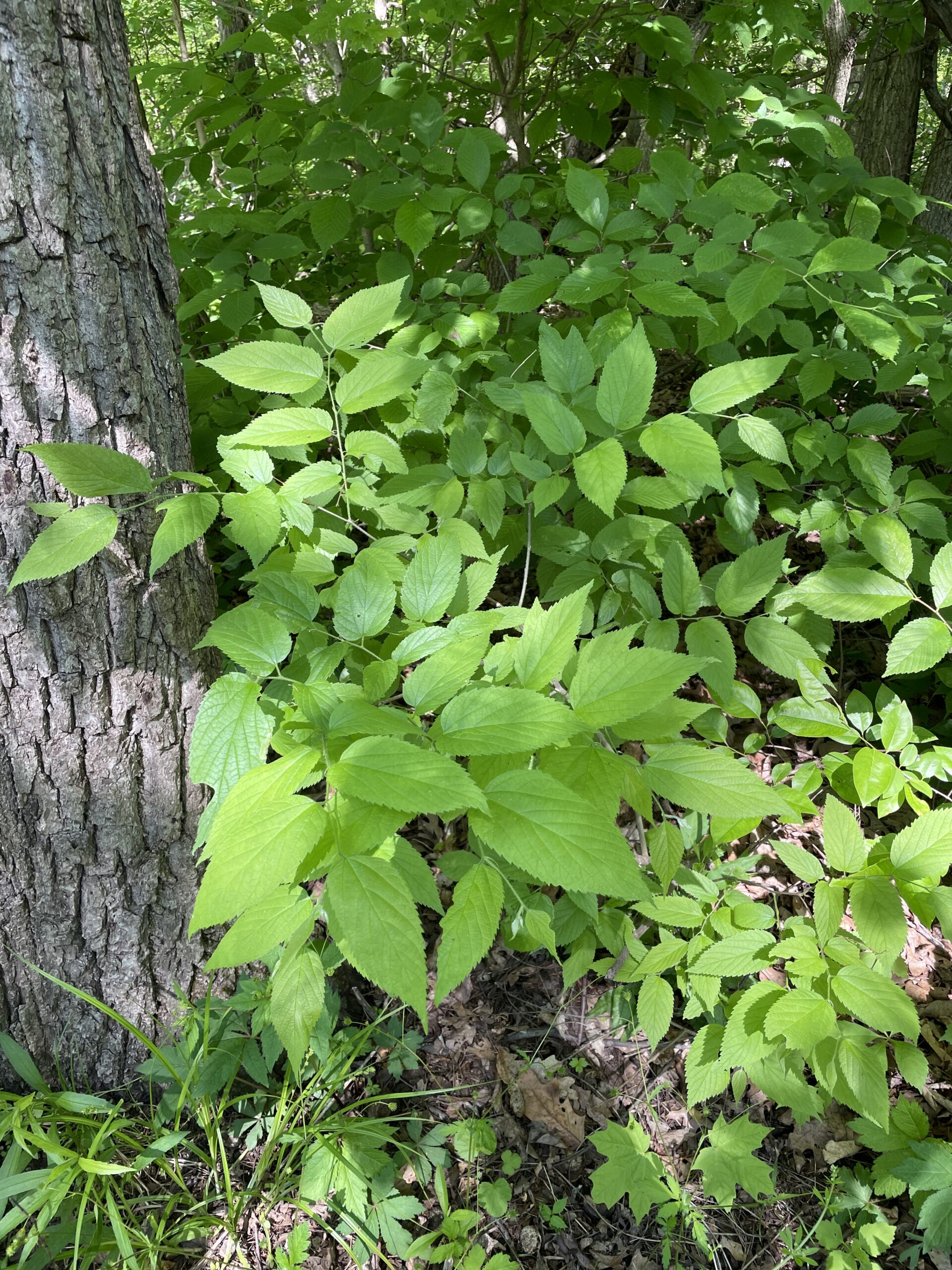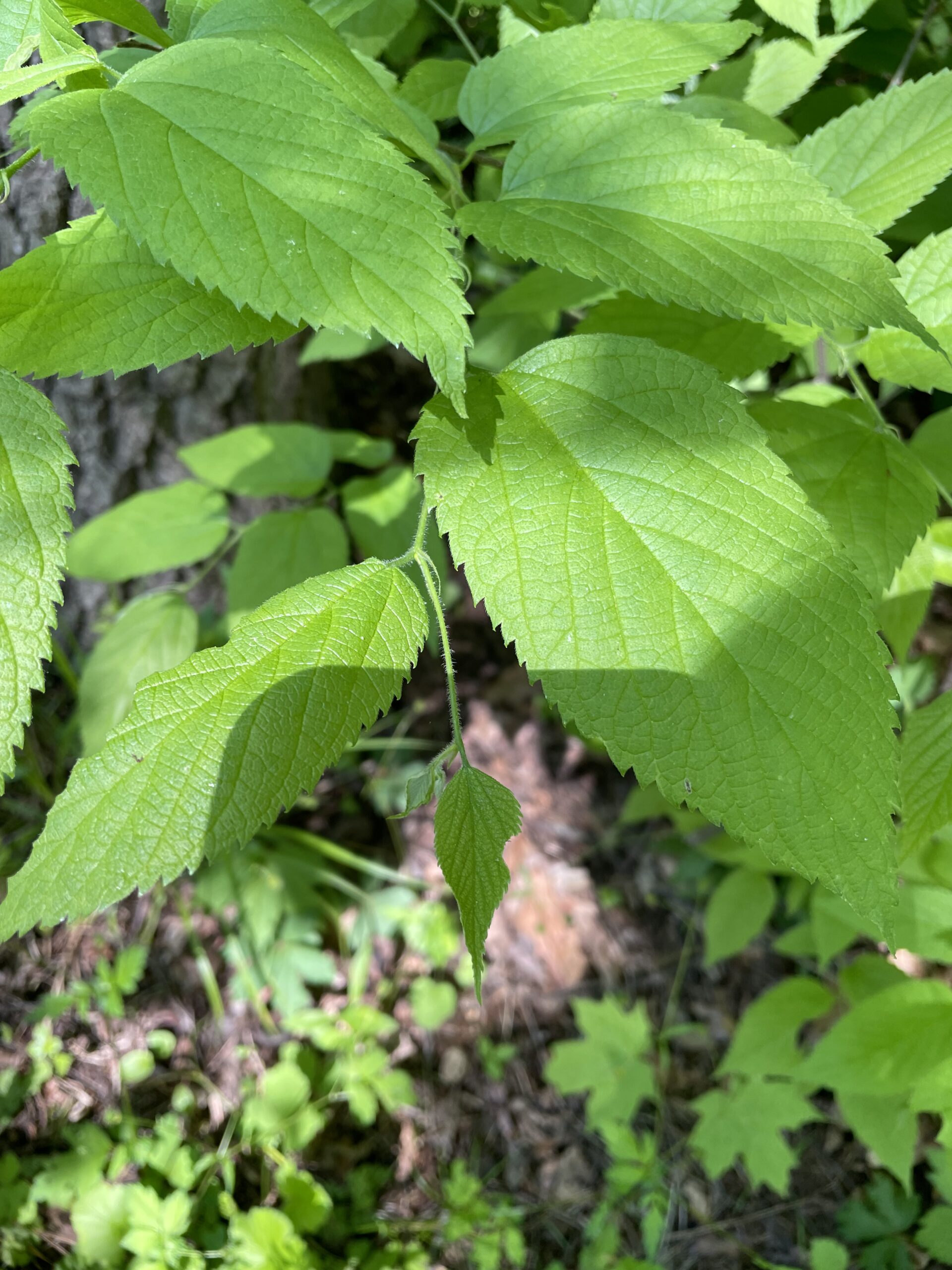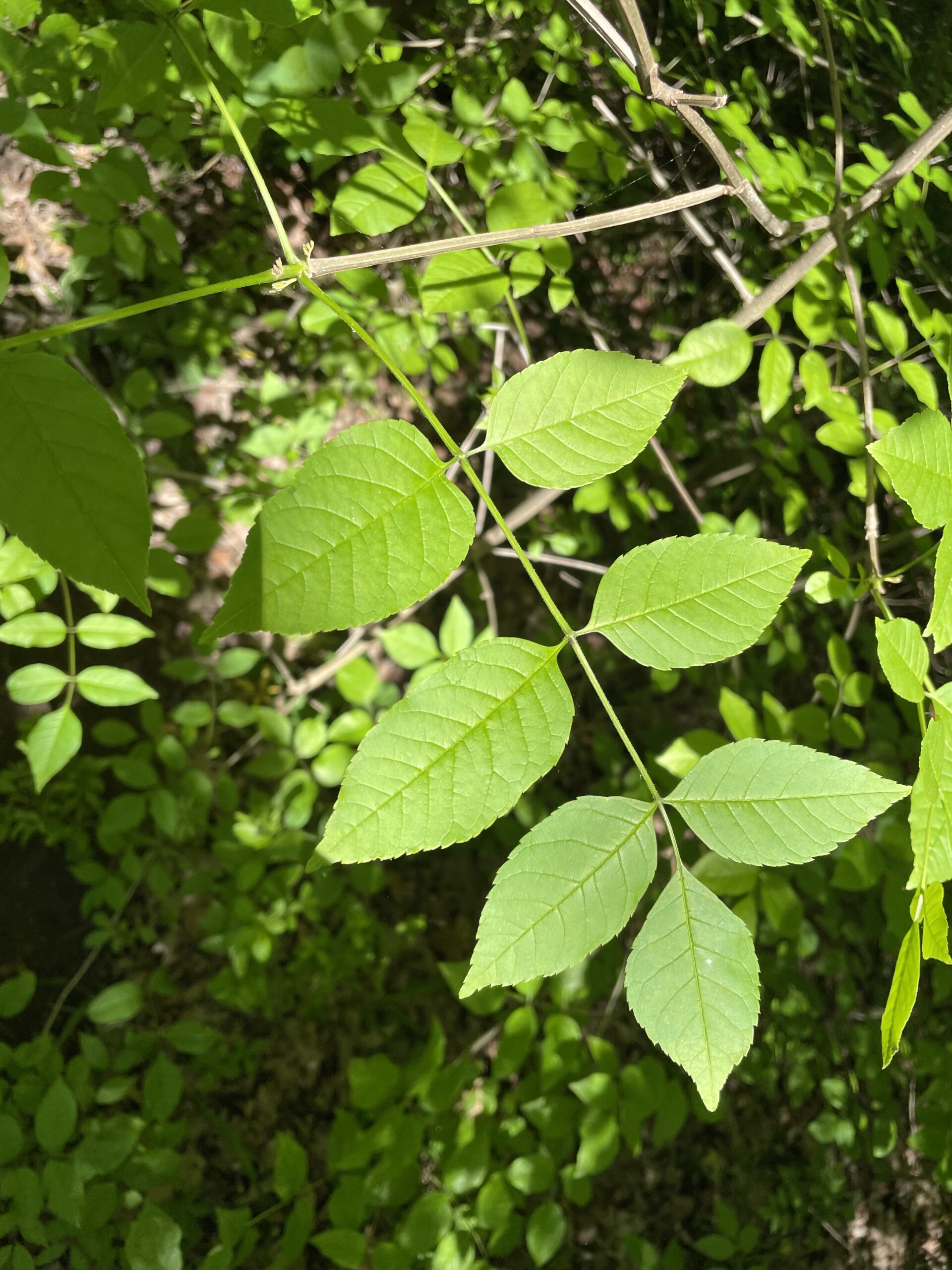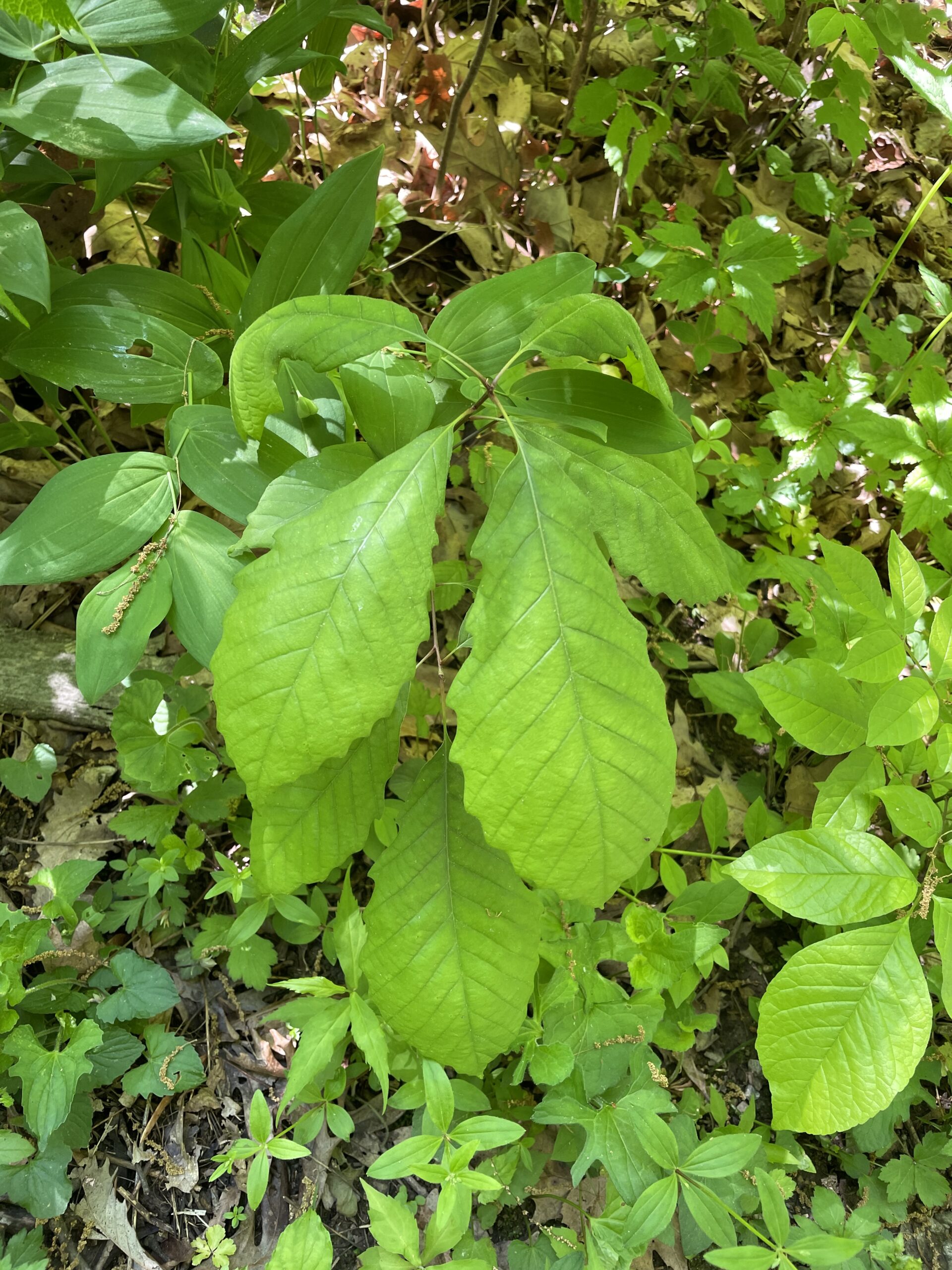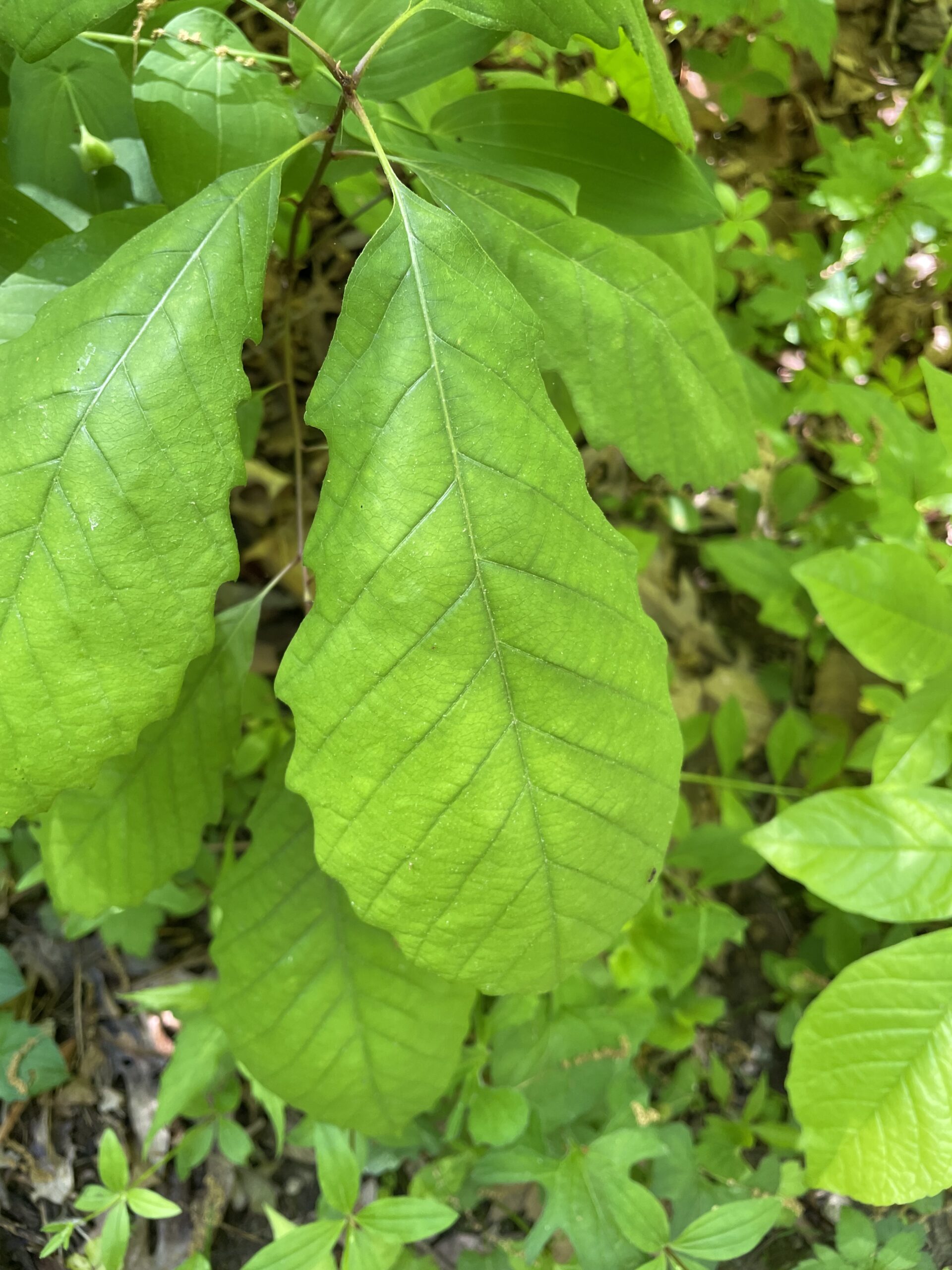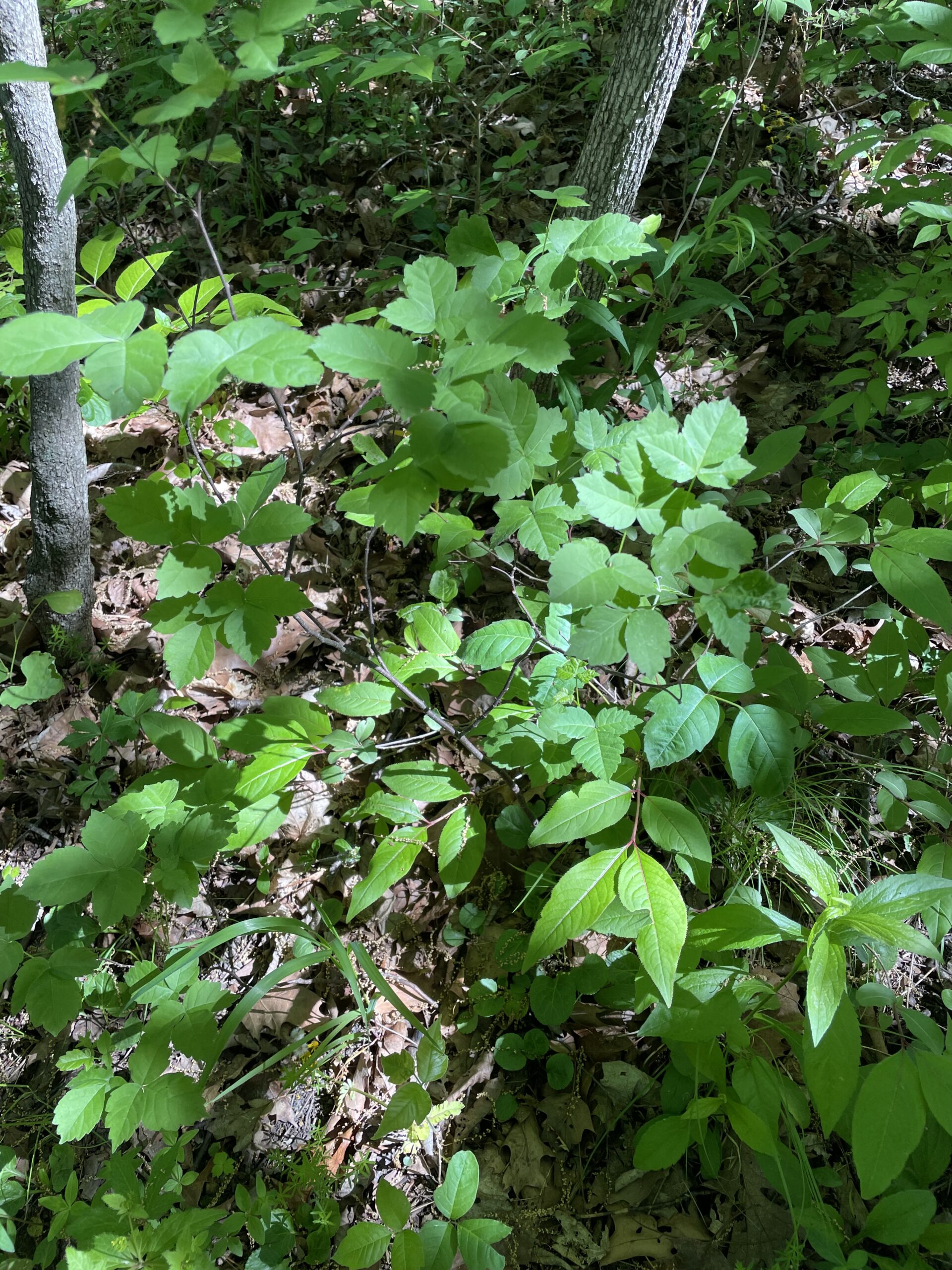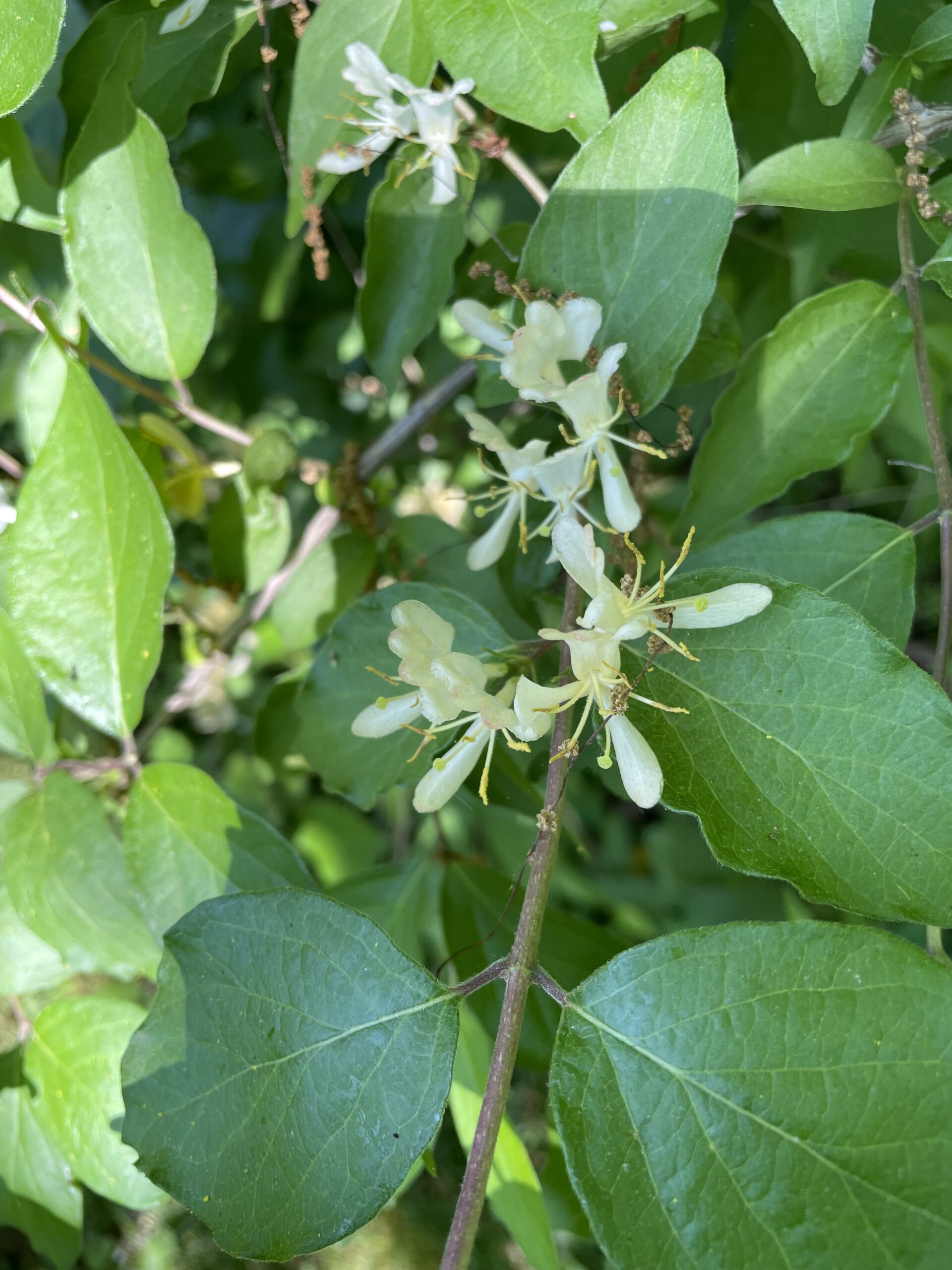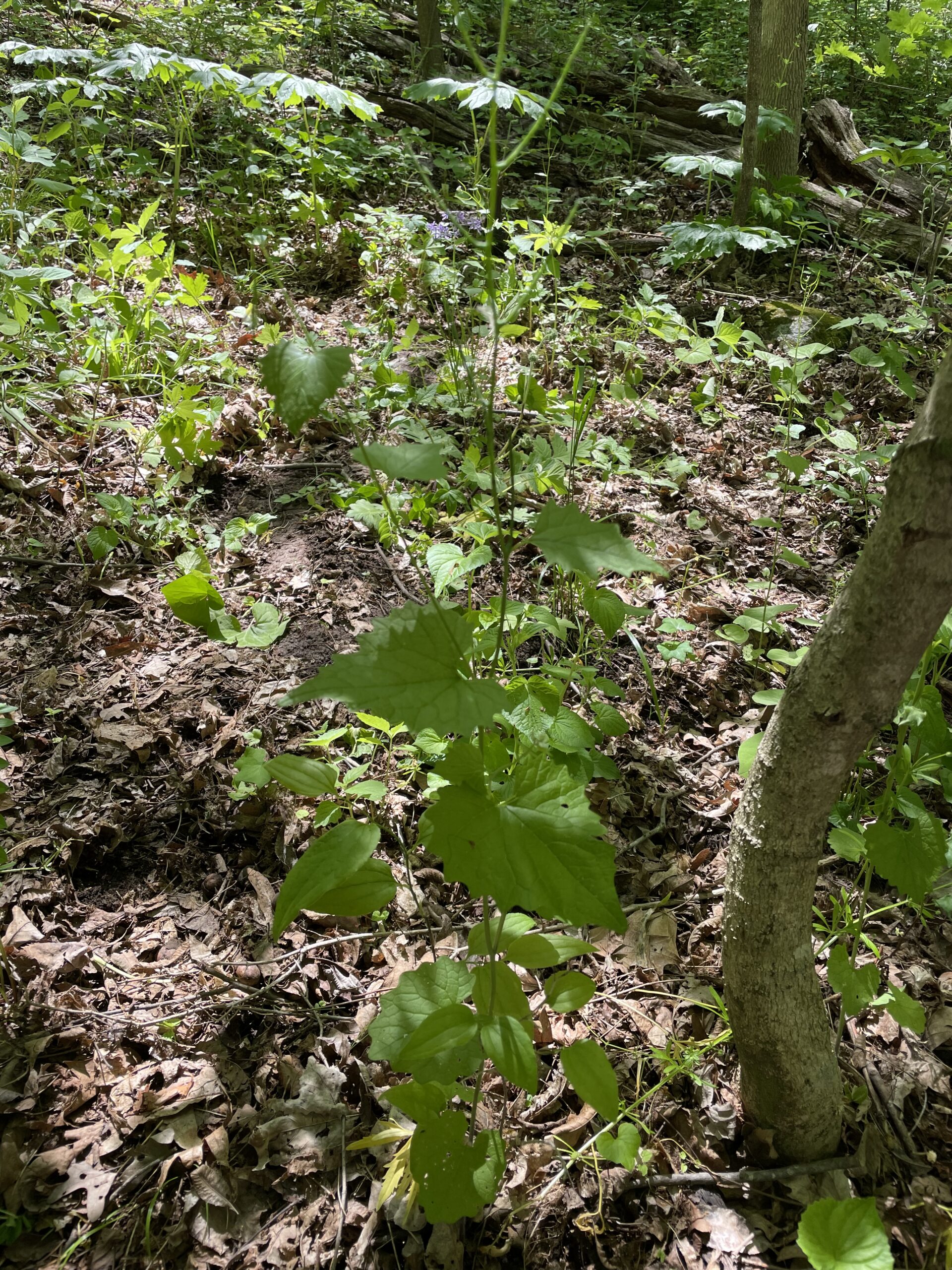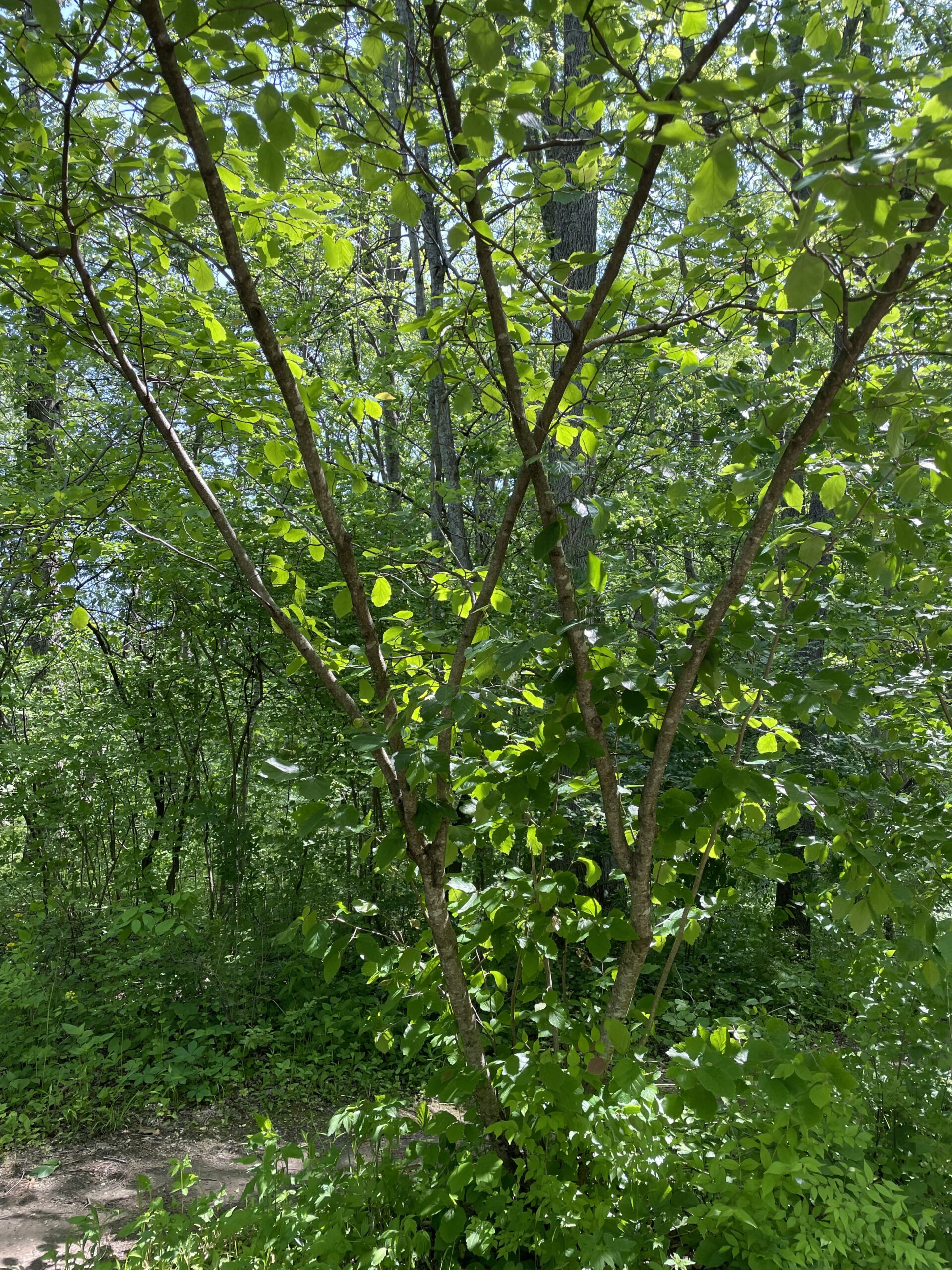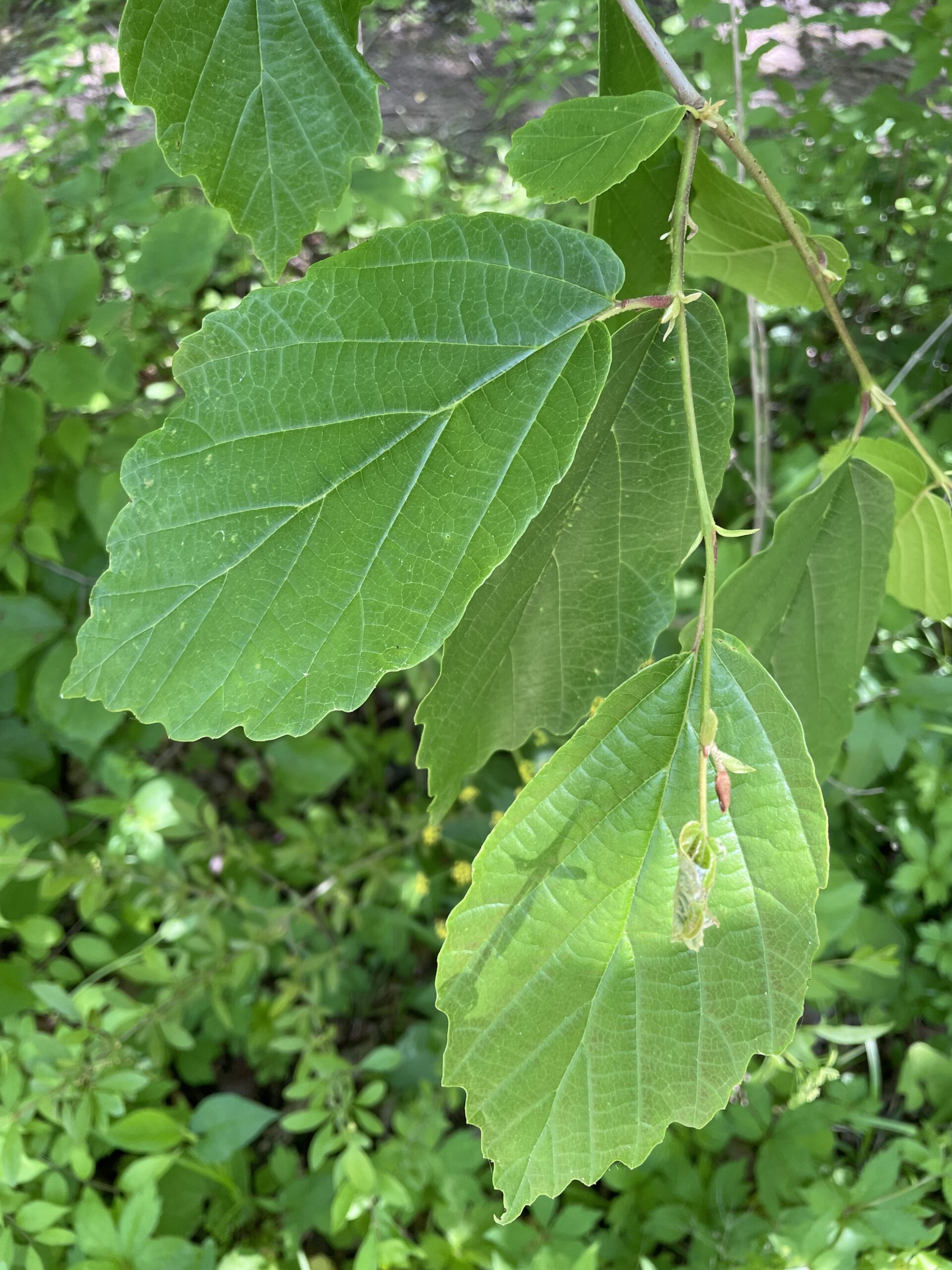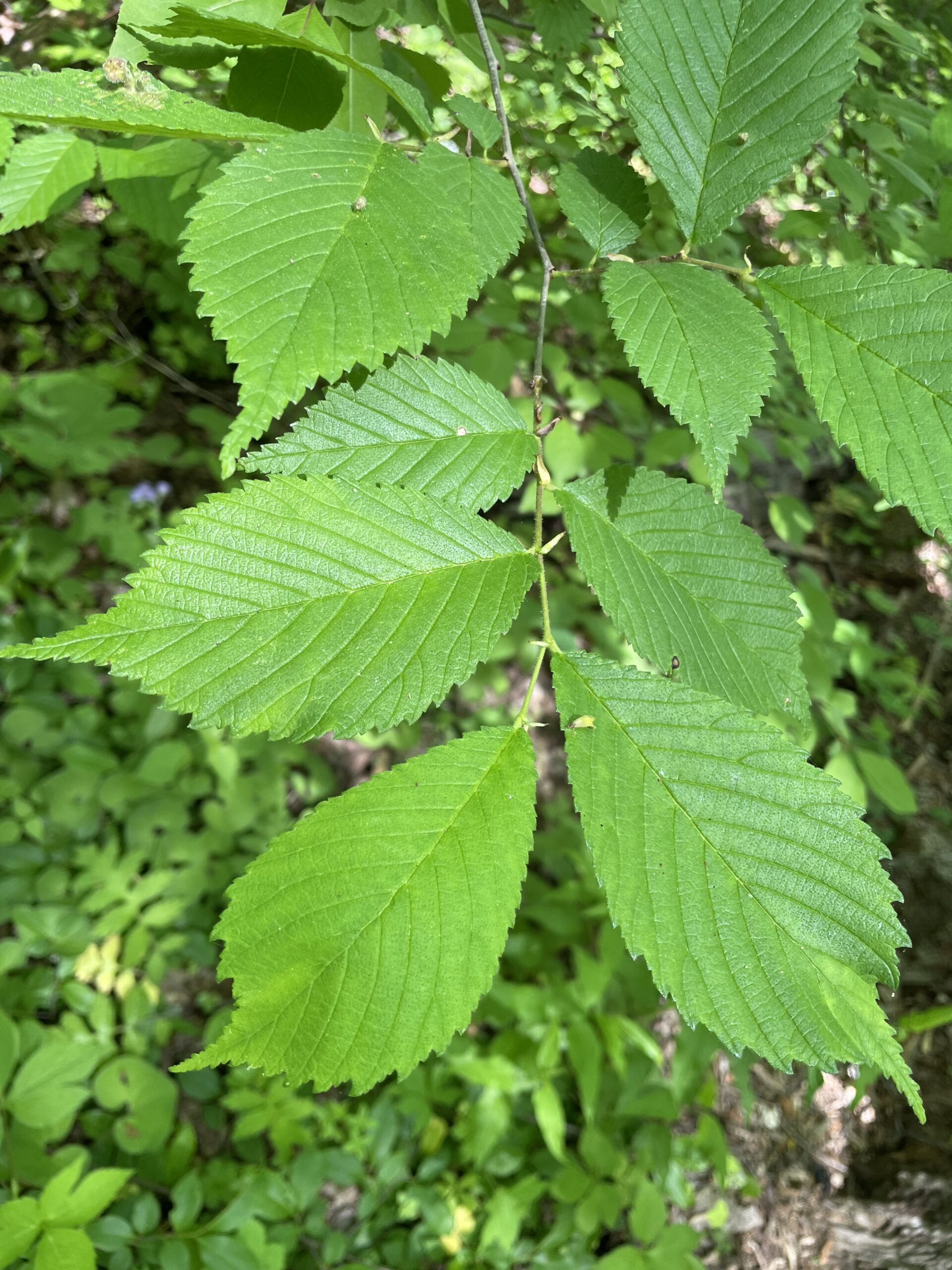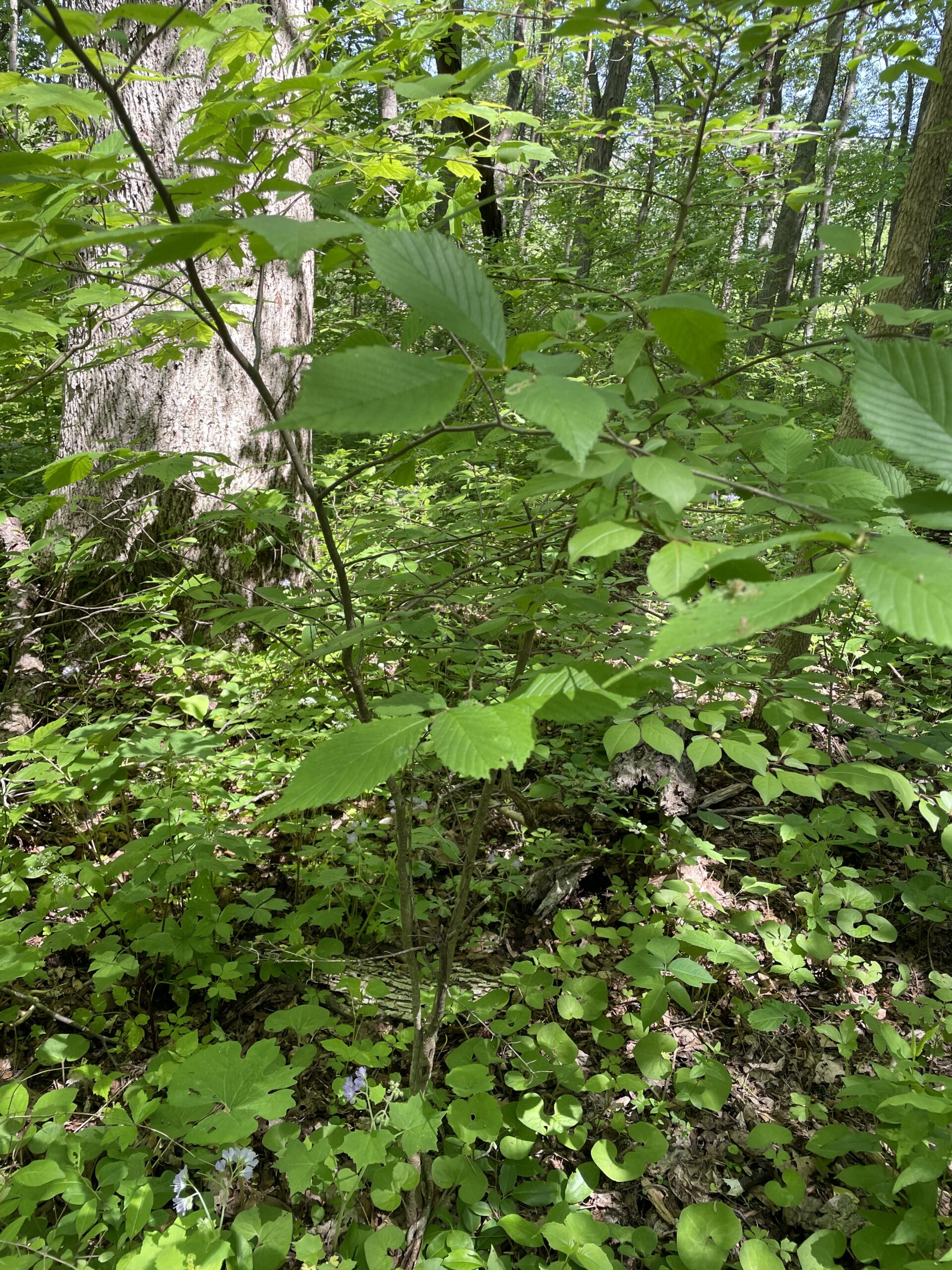Class Field Trip!
This page is dedicated to our Ohio Plants course first field trip where we visited Battelle Darby Metro Park! While here, we learned and identified 4 different limestone restrictive plants, 2 invasive plants and I was also tasked with observing 2 medicinal plants. In addition, we read and studied the article, “Linking Geology and Botany… a new approach”, by Jane L. Forsythe, which gives some good information into the geology of Ohio, including how the layers of rock strata were formed and how this play a major role in the types of substrate that Ohio plants prefer. As you read along this page, I have included pictures of the plant species from Battelle Darby Park with descriptions using the Peterson Field Guides and the Geobotany article as my sources, and also the answers to the 9 questions asked by Dr. Klips regarding the Geobotany article.
Question 1
The geology of Ohio (if not regarded too closely) may be divided neatly into two parts. Contrast these two parts in terms of their geographic location, types of underlaying rocks and their physical properties, and the landscape/topography that characterizes each.
The geology of Ohio is neatly divided into western and eastern halves. The western half is underlain by limestone, which is a rock type that is relatively nonresistant to the erosion that has occurred over the last 200 million years. As a result, the landscape has been worn down and is flat in this region of Ohio. Comparatively, eastern Ohio is mostly underlain with sandstone, a more resistant rock type, which is underlain by shale further in the west and throughout Cleveland. Even though water does seep through sandstone readily, the dissolving process is very slow, giving it a resistant property. Shale is significantly less resistant and is worn down in areas except where it’s protected by sandstone.
Question 2
The reason for the difference in kinds of rocks is not difficult to understand. Describe the original sequence of sedimentary rock strata (three types in order from top to bottom), an arch that formed 200 million years ago noting where the crest of the arch was located compared with the low-lying toe of the arch, and an important river system that occupied OH for a long time. (Be sure to give the name of the river, state about how many years it flowed and what effect it had upon the landscape. What curtailed the activities of the river?)
The original horizontal sequence of Ohio’s sedimentary rock strata can be described as a thick series of limestone layers overlain by shales, then further overlain by sandstones. It was slightly tilted into the form of a low arch before any erosion began. This arch helped create the original Appalachian Mountains in the east and the subsequent erosion has cut the deepest where the arch stood the highest. The oldest rocks, being the limestone, were exposed along the arch’s crest which extended from north-south in western Ohio. Therefore, limestone is found throughout western Ohio and its nonresistance has led to the erosion of that land down to nearly a flat plain. Moving east and going away from the crest of the arch, we find the young, resistant rock layers of sandstone, where the erosion cut deeply into the rock strata but did not erode it completely away, which resulted in the sandstone hills we see in this area. The cause of most of the erosion is the result of a preglacial stream known as the Teays River. This river was present in routes across Ohio for a very long time and arose about 200 million years ago. From what geologists know, the erosion of the land due to the river has been continuously occurring over the last 200 million years, only being halted by the advancement of ice age glaciers, which took place less than 1 million years ago.
Question 3
Pleistocene glaciers invaded OH a few hundred thousand years ago or less. What feature of the landscape slowed the glaciers and so caused there to be a glacial boundary cutting across OH? Sketch a map of Ohio and on it place the glacial boundary.
The glaciers were slowed down by the steep-sided sandstone hills of eastern, Ohio, making it so the glacial boundary extends no farther south than Canton, Ohio. However, in western Ohio, with its broad limestone plains, the glacial boundary extended as far south as northern Kentucky, as there was nothing to hinder the advancing ice. My attempted sketch below of Ohio showing the glacial boundary.
Question 4
Describe “glacial till” in terms of its general composition (a definition of till), and how it differs in eastern and western OH.
Till can be defined as an unsorted mixture of sand, silt, clay, and boulders that accumulated directly from the melting of the glacier ice. In western Ohio, the glacial till is rich in lime and clay, while in eastern Ohio most of the till contains little lime and clay. However, near the marginal area of the sandstone hills, the till is higher in lime and clay than it is anywhere else in eastern Ohio.
Question 5
Contrast the basic substrate for plants in western and eastern OH in terms of drainage, aeration, pH (limey versus acid) nutrient availability.
The most common substrate found on the plains of western Ohio is limey, clayey till providing a relatively impermeable soil that is high in lime, but poorly drained and inadequately aerated. Water does not soak into the soil very fast in these areas but tends to remain on the surface which can cause low oxygen availability during wet periods and bad droughts during dry periods. Lastly, the supply of plant nutrients here is abundant. In comparison, eastern Ohio has a very permeable sandstone bedrock that produces a very acidic, low-nutrient substrate. Here, the sandstone provides a supply of moisture that is continually available and cool, coming from the springs. The shale that is present beneath the sandstones typically produces an acidic substrate, however, it is impermeable which makes it an especially drought worthy substrate during long dry periods. In some areas where the shale is layered within the sandstone, the till results in less acidic, more moist and more nutrient-rich soils and substrates more similar to that found in the till of western Ohio.
4 Limestone Loving Plants Found at Battelle Darby Park
American Hackberry, Celtis occidentalis
American Hackberry occupies high, dry areas on limestone bedrock in the Erie Islands, but is more common along floodplains in most of Ohio. As described in the Peterson Field Guide for Trees and Shrubs, this tree ranges in size from small to large and has long-pointed leaves that are coarsely toothed. The wood is similar to ash and has commercial value. The fruits, also called “sugarberries”, feed numerous species of bird including pheasant, wild turkey, bobwhite, etc.
Blue Ash Tree, Fraxinus quadrangulata
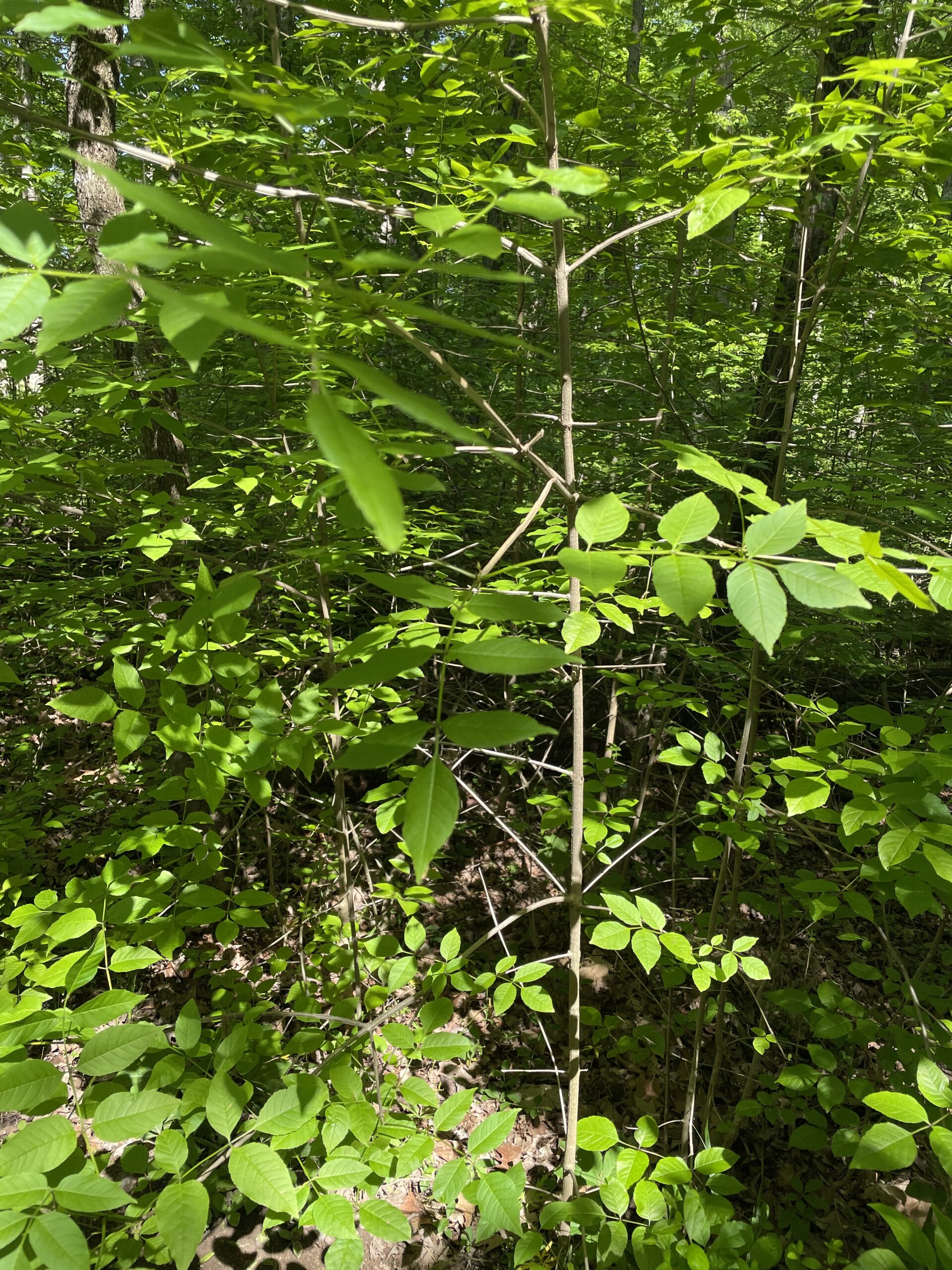 Blue Ash is prominent on the limestone substrates of the Erie Islands, but is also present in western Ohio in areas with high lime till. Blue Ash is lacking in the acid substrates of eastern Ohio creating a restrictive limestone environment for this species. They are high ground trees with 7-11 toothed leaflets and distinctive sharply angled twigs.
Blue Ash is prominent on the limestone substrates of the Erie Islands, but is also present in western Ohio in areas with high lime till. Blue Ash is lacking in the acid substrates of eastern Ohio creating a restrictive limestone environment for this species. They are high ground trees with 7-11 toothed leaflets and distinctive sharply angled twigs.
Chinquapin Oak Tree, Quercus muehlenbergii
Chinquapin Oak is a species most commonly found on limestone or limy substrates but is not limited in its distribution to just these areas. From the Peterson Field Guide, this tree is medium in size and its leave have 8-13 pairs of sharp teeth, as you can sort of see in the pictures directly above. The bark is light gray and flakey, but not ridged, distinguishing it from a similar Oak tree, Chestnut Oak.
Fragrant Sumac, Rhus aromatica
Fragrant sumac seems to occur in drier, higher areas where the limestone is present only at really shallow depths below the ground surface. The Field Guide describes fragrant sumac as a low bush with 3-parted leaves that are large but toothless. They have a pleasant odor when crushed up, hence the name. They produce small, red clustered fruits that are bell-shaped and snacked upon by some birds.
Question 6
Name 5 species of trees/shrubs that have a distribution generally limited to limestone or limey substrates (such as Ohio’s Lake Erie islands).
Five species of trees and shrubs that have a general distribution limited to limestone or limey substrates includes, Redbud (Cercis canadensis), Red-cedar (Juniperus virginiana), Hackberry (Celtis occidentalis), Chinquapin oak (Quercus muehlenbergii), & Hop hornbeam (Ostrya virginiana).
Question 7
Name 5 species of trees/shrubs that have a distribution generally limited to high-lime; clay-rich substrates developed in the thick glacial till of western Ohio.
Five species that have a distribution generally limited to high-lime, clay-rich substrates include, Sugar maple (Acer saccharum), Red oak (Quercus borealis), Shagbark hickory (Carya ovata), Beech (Fagus grandifolia), & White ash (Fraxinus americana).
2 Invasive Plants
Amur Honeysuckle, Lonicera maackii
This Amur Honeysuckle plant is an annoying woody, invasive shrub native to northeastern Asia. It was first introduced into southern Ohio around the late 1950’s, but it now vigorously growing throughout Ohio and much of the Eastern United States. This shrub is to blame for the displacement of many native plants due to its aggressive growth, high environmental tolerance and its easy, bird-dispersed fruits for reseeding (https://ohiodnr.gov/discover-and-learn/plants-trees/broad-leaf-trees/amur-honeysuckle-lonicera-maackii). Unlike the poison Ivy plant that is toxic and causes the notorious rash, fragrant sumac is non-toxic.
Garlic Mustard, Alliaria officinalis
According to Lawrence Newcomb’s Wildflower Guide, this second invasive plant called Garlic Mustard belongs to the Mustard family and has coarsely toothed leaves, with long stalks. It produces wide white flowers, as you can see above, and the leaves smell like garlic when crushed.
Question 8
Name 5 species of trees/shrubs that have a distribution generally limited to sandstone hill of eastern OH.
Five species that have a distribution limited to the sandstone hills of eastern Ohio include, Chestnut oak (Quercus montana), Sourwood (Oxydendrum arboreum), Pitch pine (Pinus rigida), Huckleberry-blueberry (Vaccinium ssp.), & Greenbrier (Smilax glauca).
Question 9
What is the major determinant of the distribution of each of these species: a) sweet buckeye (contrast with hemlock), b) hemlock (contrast with sweet buckeye, c) rhododendron?
The Sweet Buckeye is one species that does not occur anywhere inside the glacial boundary and the reasons for this are mostly unknown. It may be that these restrictions are due to problems of repopulation by these plants. This plant also does not extend as far north as the glacial boundary in eastern Ohio possibly due to climate.
Hemlock is also present in the unglaciated eastern part of Ohio, however, its distribution spreads well north of the glacial boundary. The reason we have a more extensive distribution here is because of its restriction for a continuously cool, moist environment. This includes deep valley bottoms in the south cut into sandstone and watered by cool spring water, or valleys in the north that contain some till but keep cool and moist. Sweet buckeye plant is restricted to unglaciated areas, while Hemlock occupies moist valley-bottom sites in sandstone.
Rhododendron is a type of plant that is present south of the glacial boundary and has a distribution that could suggest it belonged to the mixed mesophytic association in Ohio. This species is one that has lived in the Appalachian highlands and migrated down into southern Ohio through the Teays River system.
2 Medicinal Plants
Common Witch-hazel, Hamamelis virginiana
For my personal assignment, I was tasked with finding 2 medicinal plants at Battelle Darby Metro and the first one I located and identified was this Common Witch-Hazel. From Peterson’s Field Guide, This grows as a small tree or shrub with wavy toothed leaves that are uneven at the base. An extract from the bark, twigs and leaves has been used medicinally for a long time for its astringent and anti-inflammatory properties (https://chestnutherbs.com/witch-hazel-bloomoogling-unusual-male-parts-explosive-seeds-and-medicinal-uses/).
Slippery Elm, Ulmus rubra
The second species of my medicinal plants is the native Slippery Elm tree. This is a medium-sized tree with a trunk that can be single or divided with leaves that are rough like sandpaper above and have a hairy texture beneath. The inner bark of the tree has been used to treat many common ailments such as wounds, fevers and sore throats in the form of lozenges. Another example stems back to the American Revolution when American soldiers would use Slippery elm to help heal their gunshot wounds (https://www.healthline.com/health/food-nutrition/slippery-elm-bark#_noHeaderPrefixedContent).
The End!
I hope you enjoyed all of the interesting information and pictures on this page about the plants we discovered at Battelle Darby Metro Park!


